Inside Columbia, City College's Darkest Night With Police
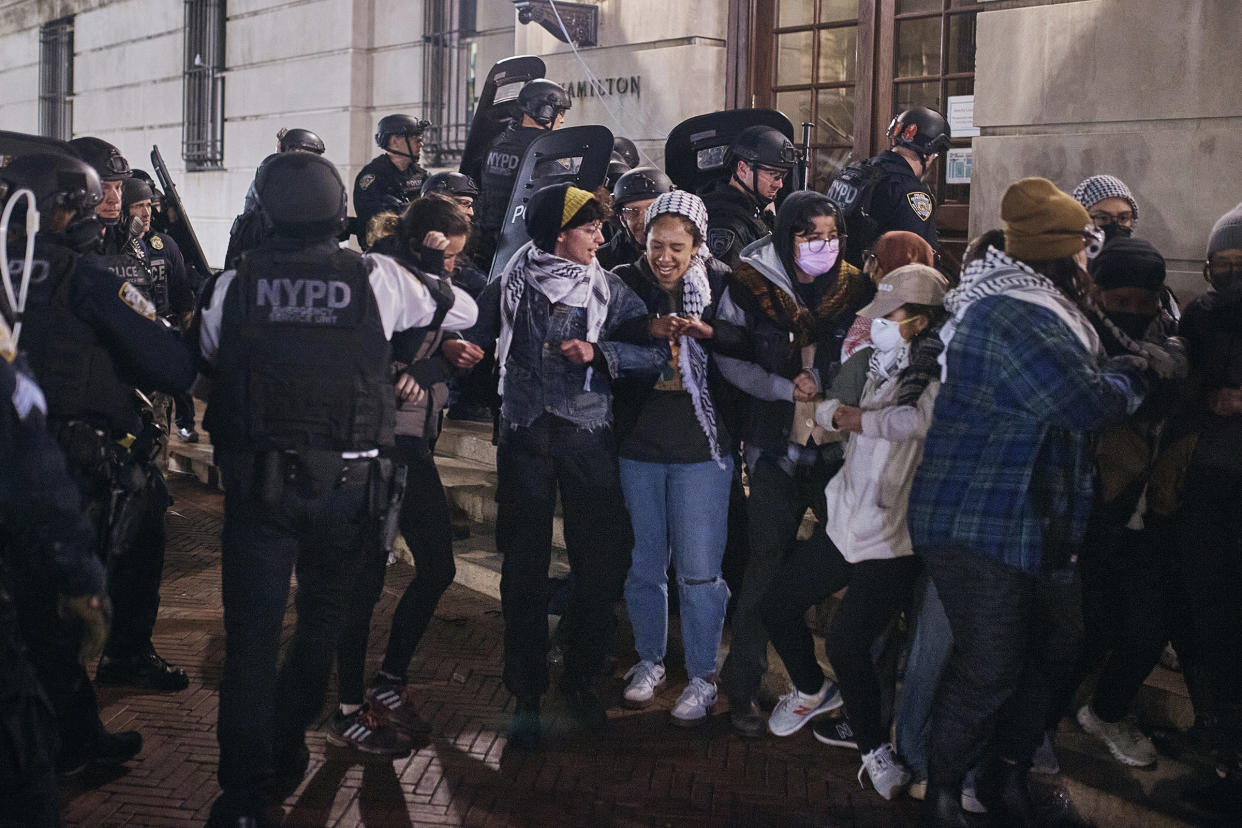
Police remove protestors blocking the entrance to Hamilton Hall, occupied by pro-Palestinian protestors, on Columbia University campus in New York City, on April 30, 2024. Credit - Andres Kudacki for TIME
Police officers arrived at Columbia University and The City University of New York’s (CUNY) City College campus Tuesday evening, tasked by school administrators with restoring safety amid nationwide pro-Palestinian campus protests in response to the Israel-Hamas war. But their conduct is what made many students and protesters—who saw their large presence and actions as disproportionate and violent—feel unsafe.
On Tuesday night, outside Columbia University’s Hamilton Hall, which was then being occupied by students, police ripped pro-Palestinian student protesters linking arms away from each other. Most of them were women, according to TIME photographer Andres Kudacki, who says police flung chairs and trash cans. Footage circling social media shows at least one protester hurtling down steps. As attending press, my eyewitness account, along with that of the protesters I spoke to, is detailed below.
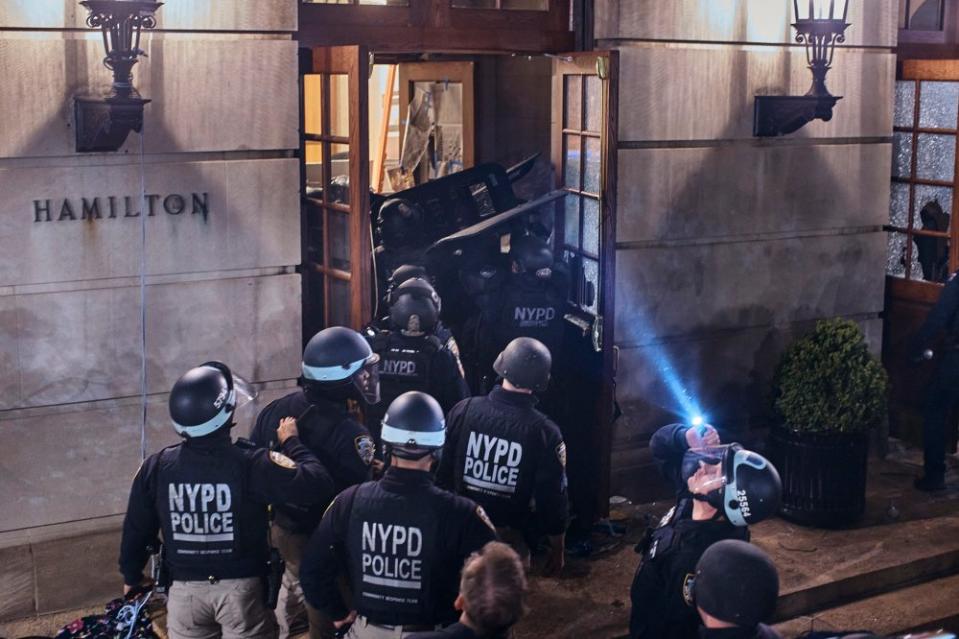
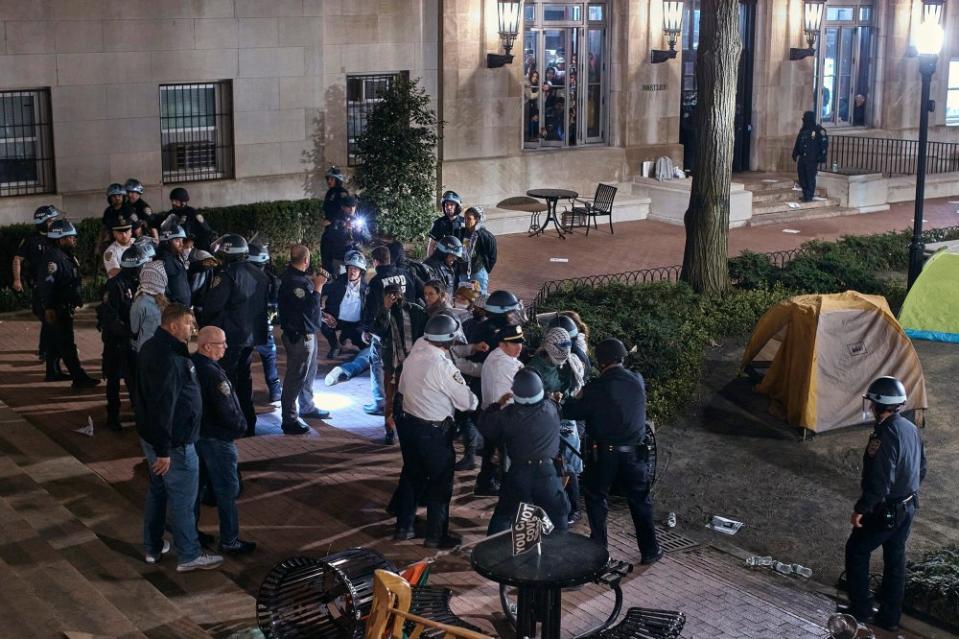
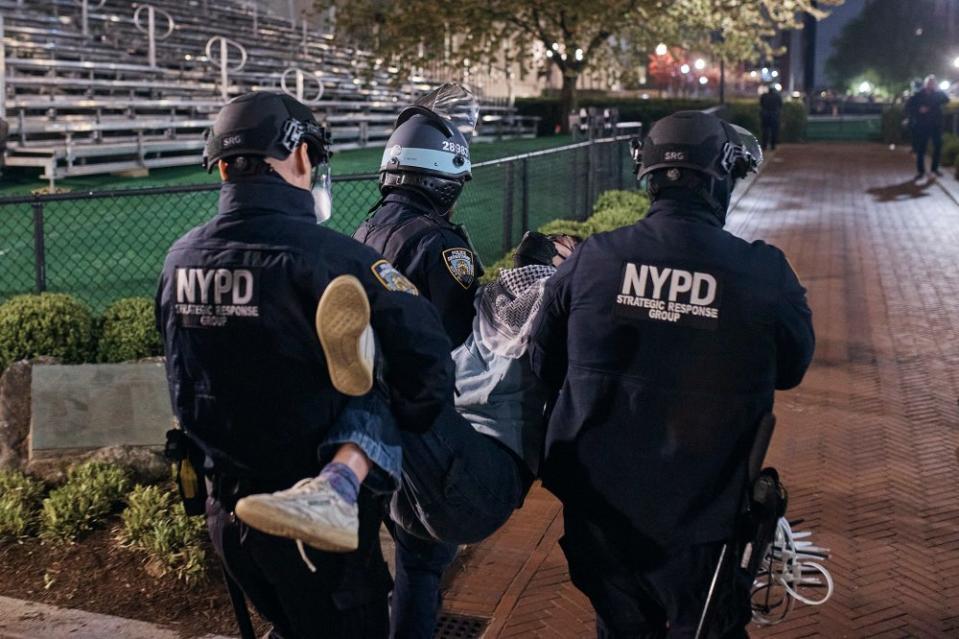
Darializa Avila Chevalier, an Afro-Latina alumnus of Columbia University’s class of 2016 and former member of Students for Justice in Palestine, managed to stay on campus during the lockdown. She was among the women blocking the entrance to Hamilton Hall. They sang, “We shall not be moved,” amid the clanging of metal as police threw furniture, she tells TIME.
Police pushed her and others to the floor, Avila Chevalier says. “I felt totally helpless at that point... it was quite horrific,” she says. “There was nothing calm or organized about the situation.” Avila Chevalier says she has bruises on her legs and arms. Once arrested students arrived on the bus, they sang all the way to the police station to calm themselves down, she says.
READ MORE: ‘Gaza Calls, Columbia Falls’: Campus Protesters Defy Suspension Threats and Occupy Hall
When contacted by TIME, the NYPD did not comment on specific questions about restricting media access or violence towards students, but sent a link to a press conference held by the city on Wednesday. At that event, New York City Mayor Eric Adams said there “were no injuries or violent clashes” and described the policing operation as “organized” and “calm.” He went on to blame “external actors hijacking a peaceful protest and influencing students to escalate” without elaborating on how many of the arrested were not students.
Columbia directed TIME to university President Minouche Shafik’s message addressed to members of the Columbia community, which was sent on Wednesday. She acknowledged inviting the NYPD onto campus and thanked them “for their incredible professionalism.”
“Students and outside activists breaking Hamilton Hall doors, mistreating our public safety officers and maintenance staff, and damaging property are acts of destruction, not political speech,” she wrote. Shafik did not expand specifically on how public safety officers and maintenance had been treated.
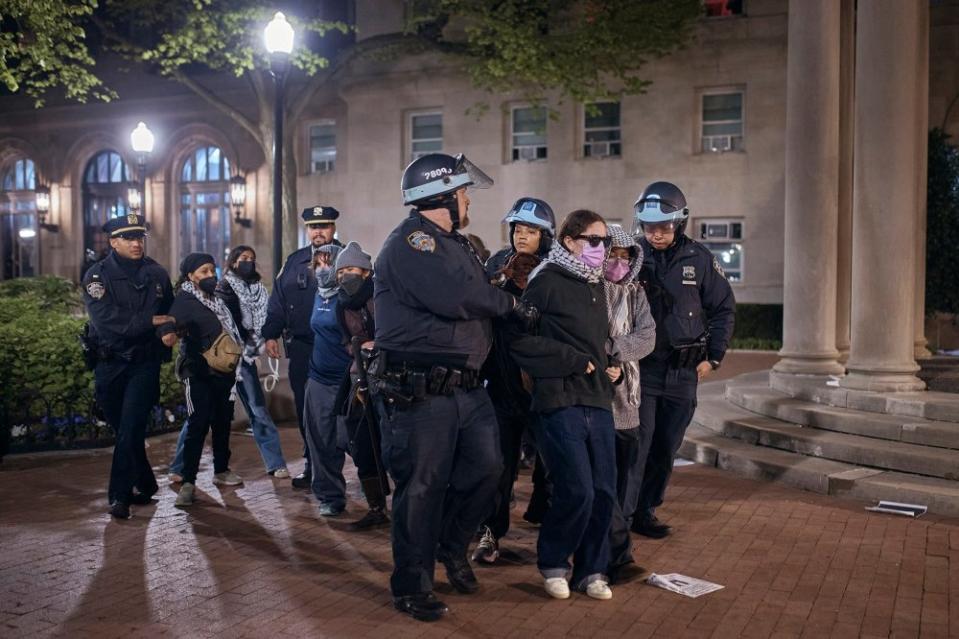
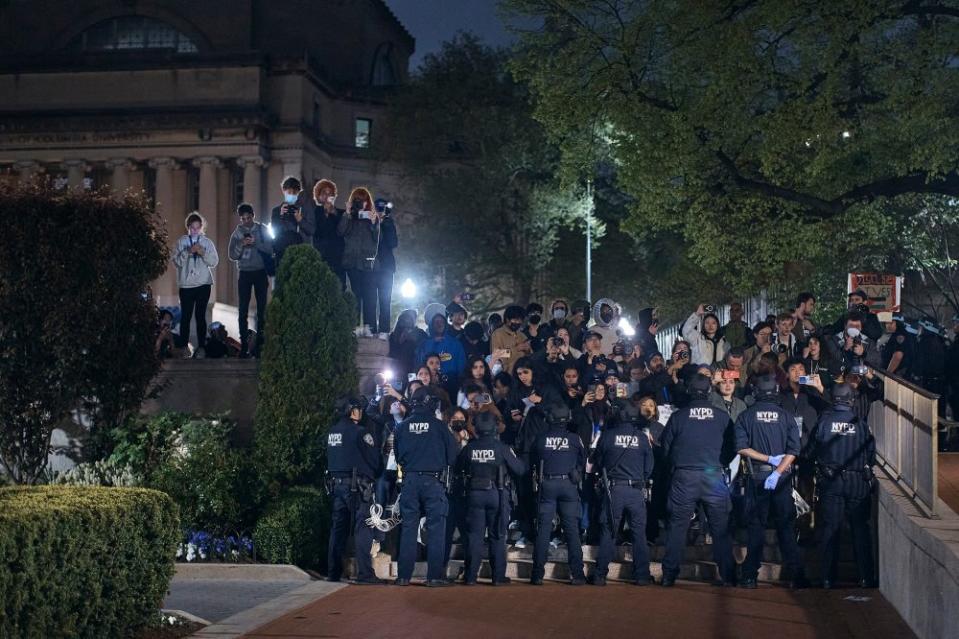
The NYPD arrested “approximately 300 people” at Columbia and City College campuses, per Mayor Eric Adams. Charges include trespassing, criminal mischief, and burglary. Student protesters at Columbia University had occupied Hamilton Hall just after midnight on Tuesday, following a breakdown in negotiations with the administration over divestment and amnesty for disciplined students. They renamed the building “Hind’s Hall” as a tribute to 6-year-old Hind Rajab, who was killed during Israel’s military offensive in Gaza. Footage of Columbia University’s lawn on Wednesday shows the encampment has been cleared. The encampment at City College has also reportedly been cleared.
Ahead of approaching the students, police ordered press to leave the Hamilton Hall area, TIME photographer Kudacki recalls. He managed to stay right outside the building, although says that police pushed him and threatened him with arrest. “Get out of here,” they told him, as they carried students away, holding them by their arms and legs.
Police barred press from entering Hamilton Hall, where they pursued students who were occupying the academic building. Desperate for any information, the public tuned into WKCR—Columbia University’s radio station—where student journalists could be heard talking about police with “sledgehammers” descending onto campus. The student journalists asked police where they should go and worried that no one would be left to document the raid. “I can confirm that I saw an NYPD officer duck his head into Pulitzer Hall… and he said, ‘If you come out one more time then you’re going to get arrested,’” one reporter said on air. “After what I saw today, I don’t know how I can feel safe on this campus with this police presence,” a WKCR reporter is quoted as having said.
Samaa Khullar, a journalist reporting on Columbia’s campus protests and a student at the university’s journalism school, said that “students were brutally arrested.” She said student press were hit, shoved, and pushed away from Hamilton Hall. “It’s hard to take this as anything but the administration trying to prevent recordings/photographs of brutal arrests,” she wrote on X (formerly Twitter).
Police locked down campus and some of the surrounding area, leaving many protesters stuck a few blocks down the road. Every time a bus full of arrested students approached, protesters cheered. Police constantly pushed them back. One protester told a cop: “You’re on the wrong side of history, you’ll see in 20 years.”
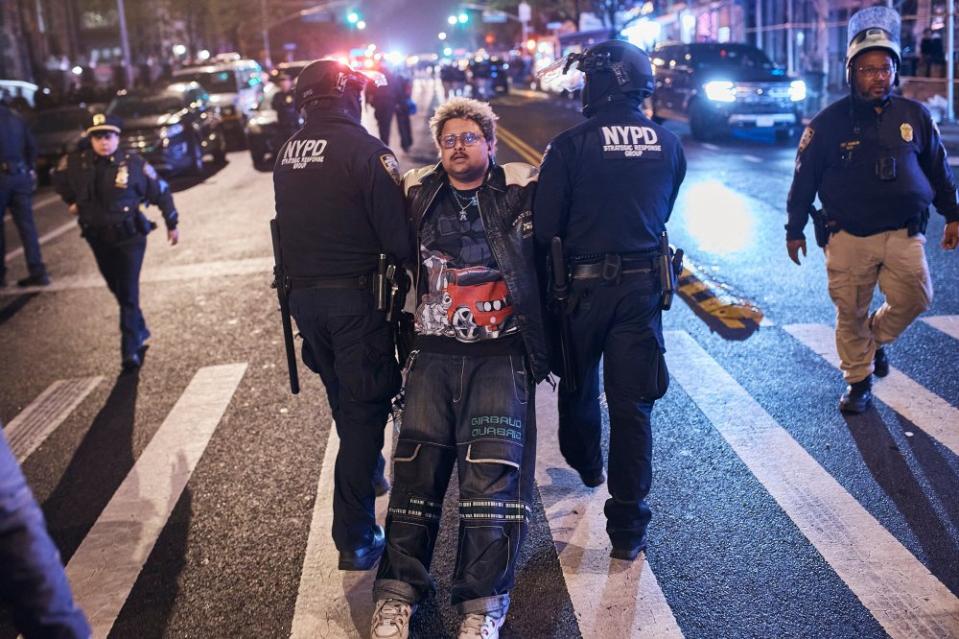
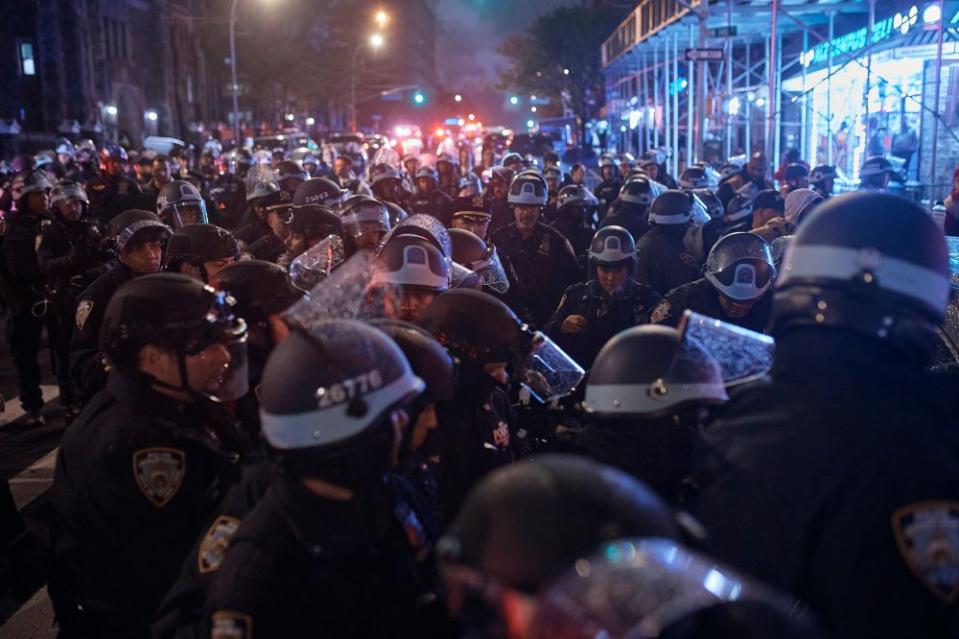
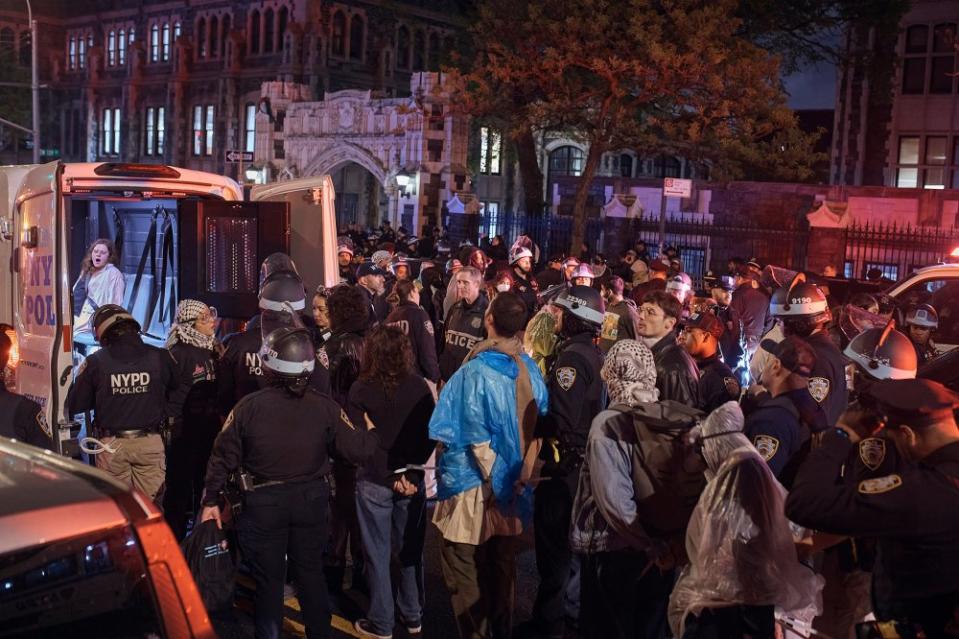
Three female Columbia undergraduate students, who are supportive of pro-Palestinian protests and the divestment demands, stood at the police barricade, wondering who officers were protecting. “To police our students in this manner is disgusting” and displays a “flagrant disregard for our wellbeing,” one of them tells TIME. They asked for anonymity because they feared discipline from the school’s administrators. The students say that antisemitism allegations have been weaponized to crack down on pro-Palestinian protests. “It makes it easier because if you can weaponize that then you have grounds to treat these students the way that they do… it looks like [Columbia University's President Minouche Shafik] is protecting someone when she’s calling the police on her students,” one of the students said. They stress that Shafik’s position was created to serve them and not politicians. It’s not too late to divest or extend amnesty to disciplined students, they say.
Read More: It's Not Easy to Be Jewish on American Campuses Today
Police also arrived on and around CUNY’s City College campus, where they held back peaceful protesters, who were chanting slogans, by rushing at them with batons. “There is no violence here, why are you in riot gear?” protestors chanted.
CUNY noted in a statement Wednesday that “Tuesday night’s actions were taken in response to specific and repeated acts of violence and vandalism, not in response to peaceful protest.” They sent TIME pictures of broken windows and a hallway with a table and chairs upside down.
“You can’t block this building, it’s illegal,” police said, after shoving protesters in front of the building. Asked where protesters could stand, they didn't answer and instead charged forward with their batons, repeatedly yelling “move back.” To which one protester argued: “It’s a public sidewalk.”
“You’re the biggest gang in New York City,” one woman yelled, after police shoved her back. “What are you gonna do with that f—ing baton? Hit a bunch of kids?” At one point, police wrestled a man to the ground and TIME's filming was obscured.
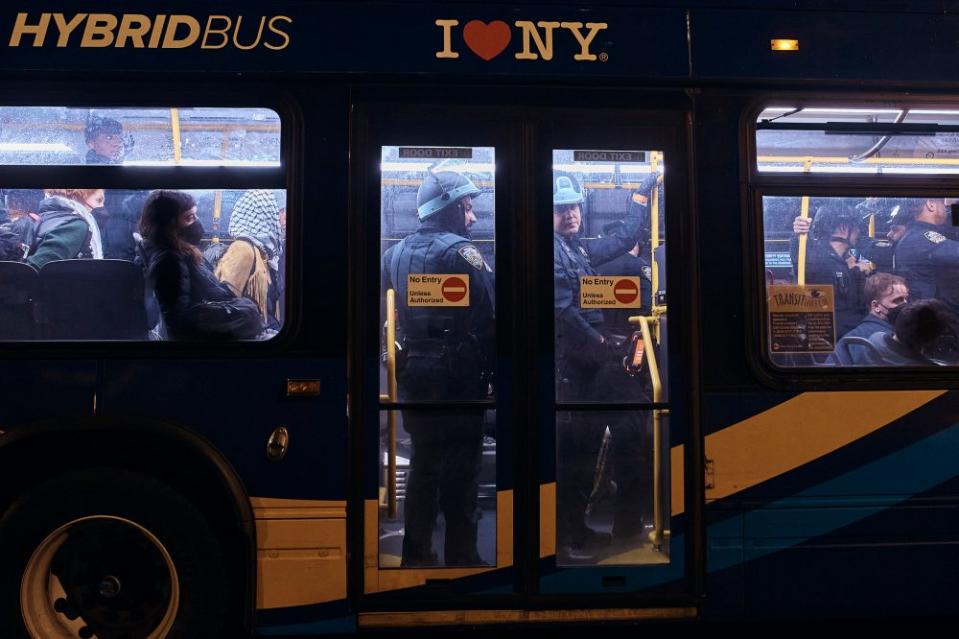
Bianca Guerrero, a program manager at a CUNY institute—who uses they/them pronouns—says that as law enforcement pushed people, they pulled a few people into a deli to “keep them from being trampled on.” They bought snacks and lingered for half an hour, at which point cops entered to ask what they were doing and started talking to the store owner. A video they took, and shared with TIME, shows the NYPD Deputy Commissioner of Public Information Tarik Sheppard getting behind the bodega counter and pressuring store owners to kick them out. “If they are not purchasing and then leaving the store, then we are going to have to close the whole store… you’re now in an emergency zone… so you have to make a decision, do you want to stay open and do business and sell something and let them move on?” When a store owner starts to interject, the police cut in again. “I don’t take sides, all I want to do is clear this area; it’s not safe for us to operate when you let these people just hang out behind our backs.”
Later in the night, police arrested protesters who were standing in the street, after an announcement that they were unlawfully blocking a roadway. They also chased after individuals standing on the sidewalk.
“I work with students; I care deeply about their safety. I really don’t agree with the decision to call the NYPD on them,” Guerrero tells TIME, noting that she is speaking in a personal capacity, not an official one. “CUNY is willing to use the force of the state on their own communities.”
Correction, May. 2: The original version of this story misstated in one instance the day that police arrived at Columbia University and the City College campus. It was Tuesday evening, not Wednesday.
Write to Sanya Mansoor at sanya.mansoor@time.com.

